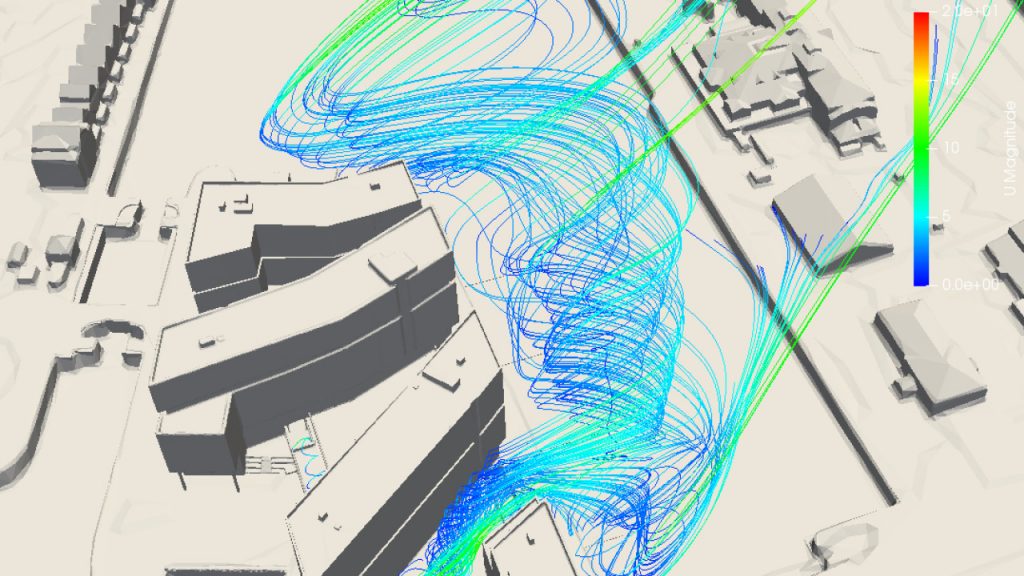GIA Manchester started providing Computational Fluid Dynamics wind microclimate assessments late last year. Since then the service has really taken off, consulting on 10 towers across Manchester, Salford and Liverpool.
Skyscraper-affected airflow is a relatively new phenomenon in cities like London, Manchester and Leeds, which were historically mainly low-rise. But as anyone who has ever walked near a very tall building in the middle of a city on a windy day will have noticed the wind is often much more intense around the base of the tower.
Accelerated winds near skyscrapers are caused by the “downdraught effect. This happens where the air hits a building and with nowhere else to go, is pushed up, down and around the sides. The air forced downwards increases wind speed at street level. And, if several towers stand near each other, there is an effect known as “channelling”, a wind acceleration created by air having to be squeezed through a narrow space.
Tall buildings wind effect is now an essential part of the planning process, (falling under the EIA) GIA Manchester is now able to make this process quicker and more cost effective utilising the highly accurate VU.CITY models as the baseline for the assessments, with CFD modelling providing huge amounts of detail on the wind flows. This combination easily highlights any potential issues and provides commercial and innovative mitigation solutions for development.
For more information or to discuss our services please contact sam.wallis@gia.uk.com


